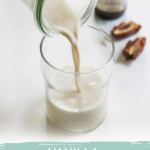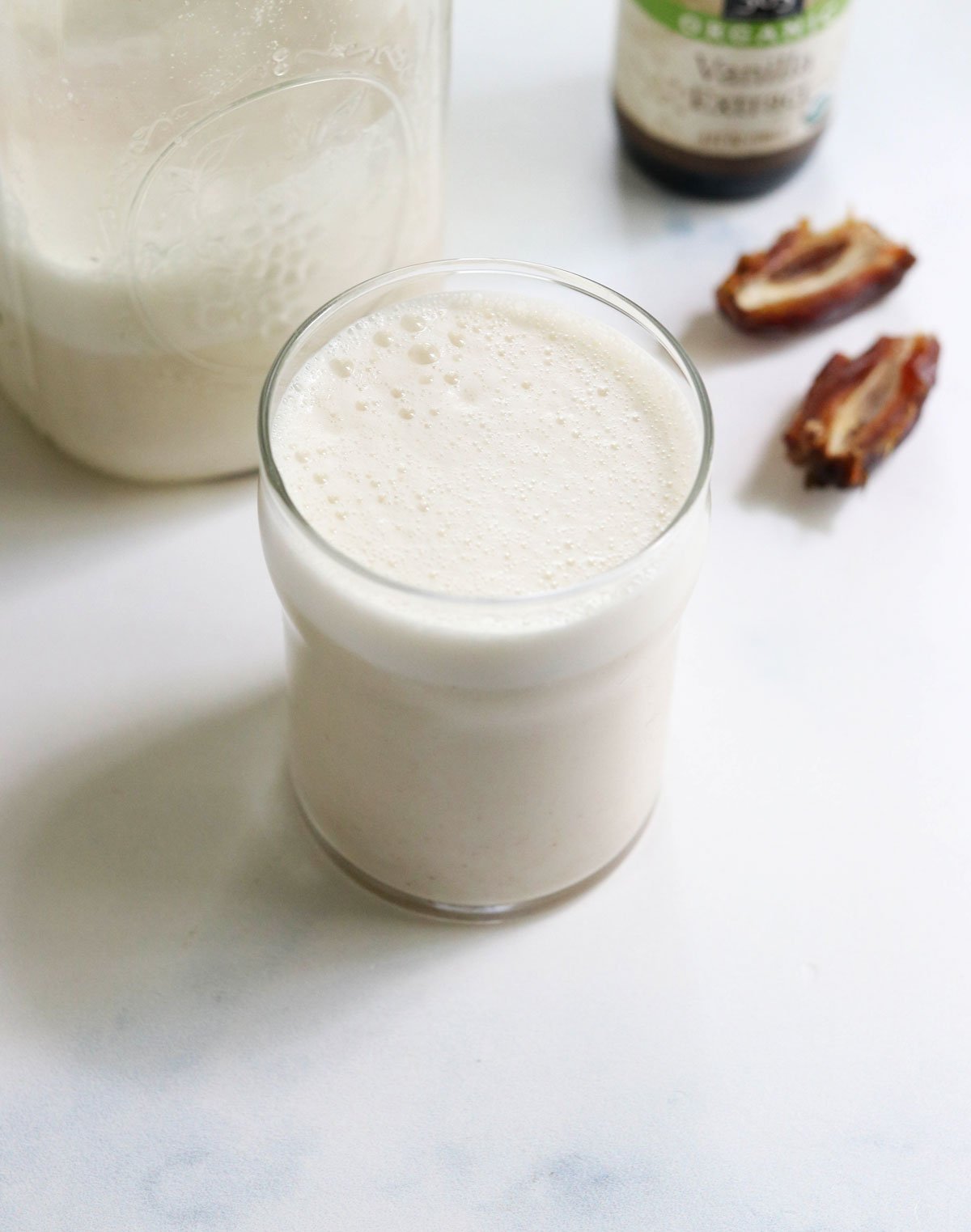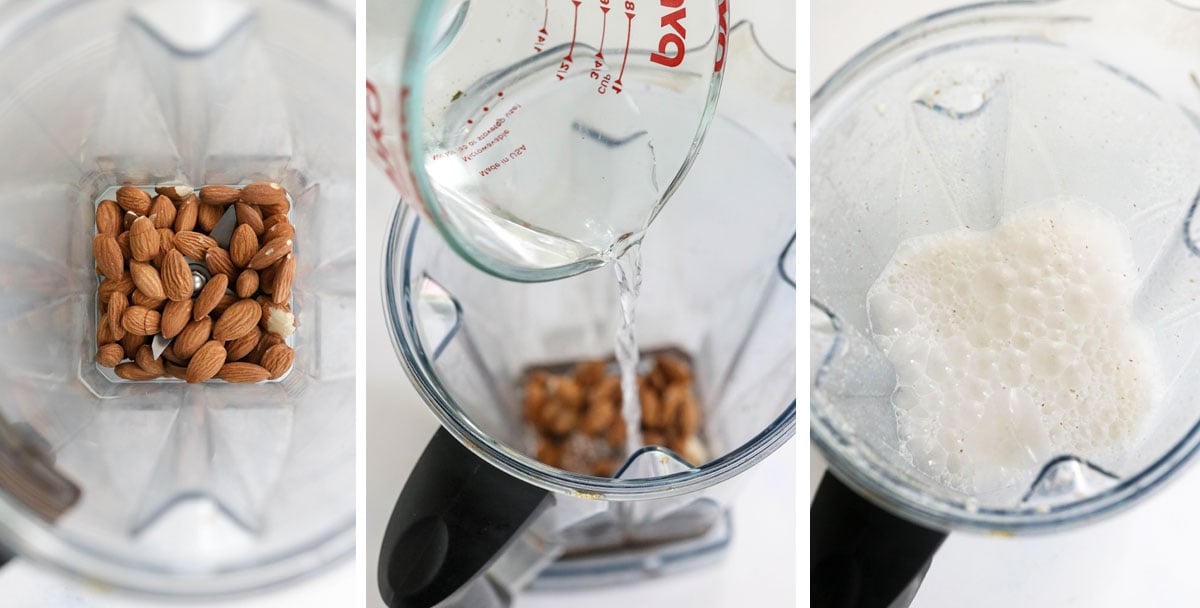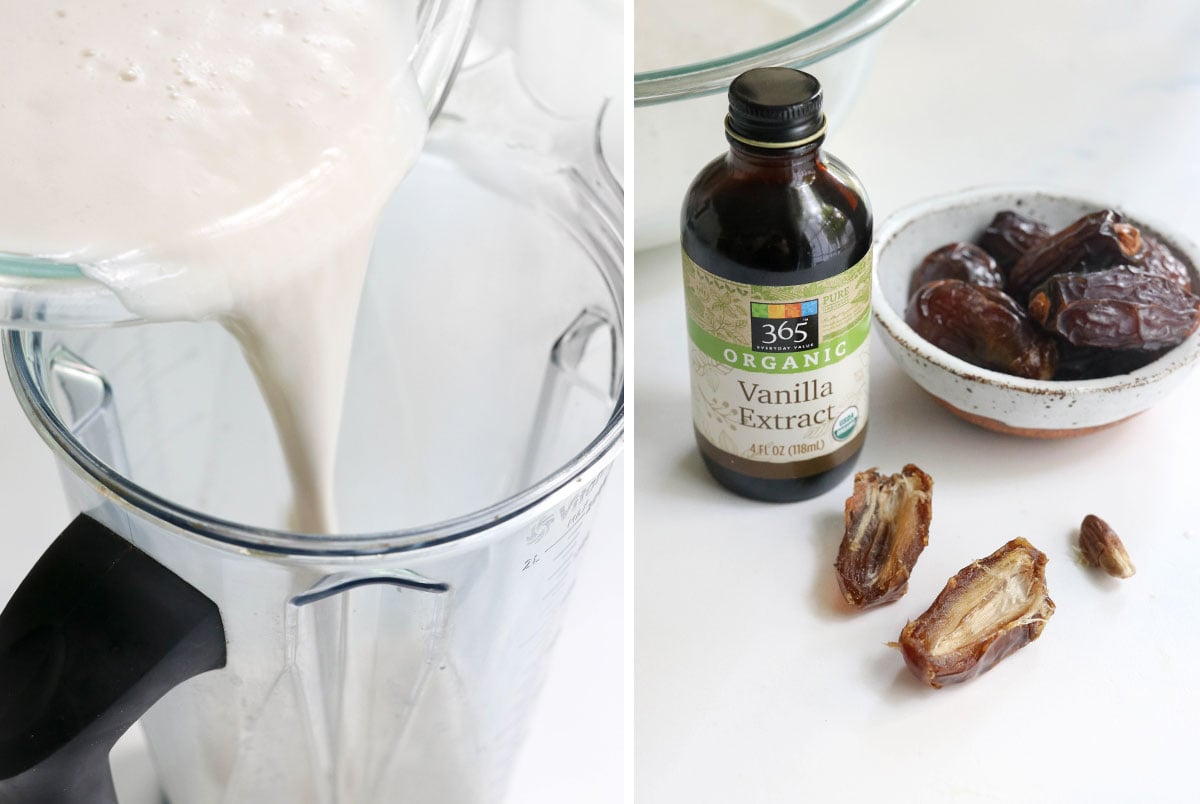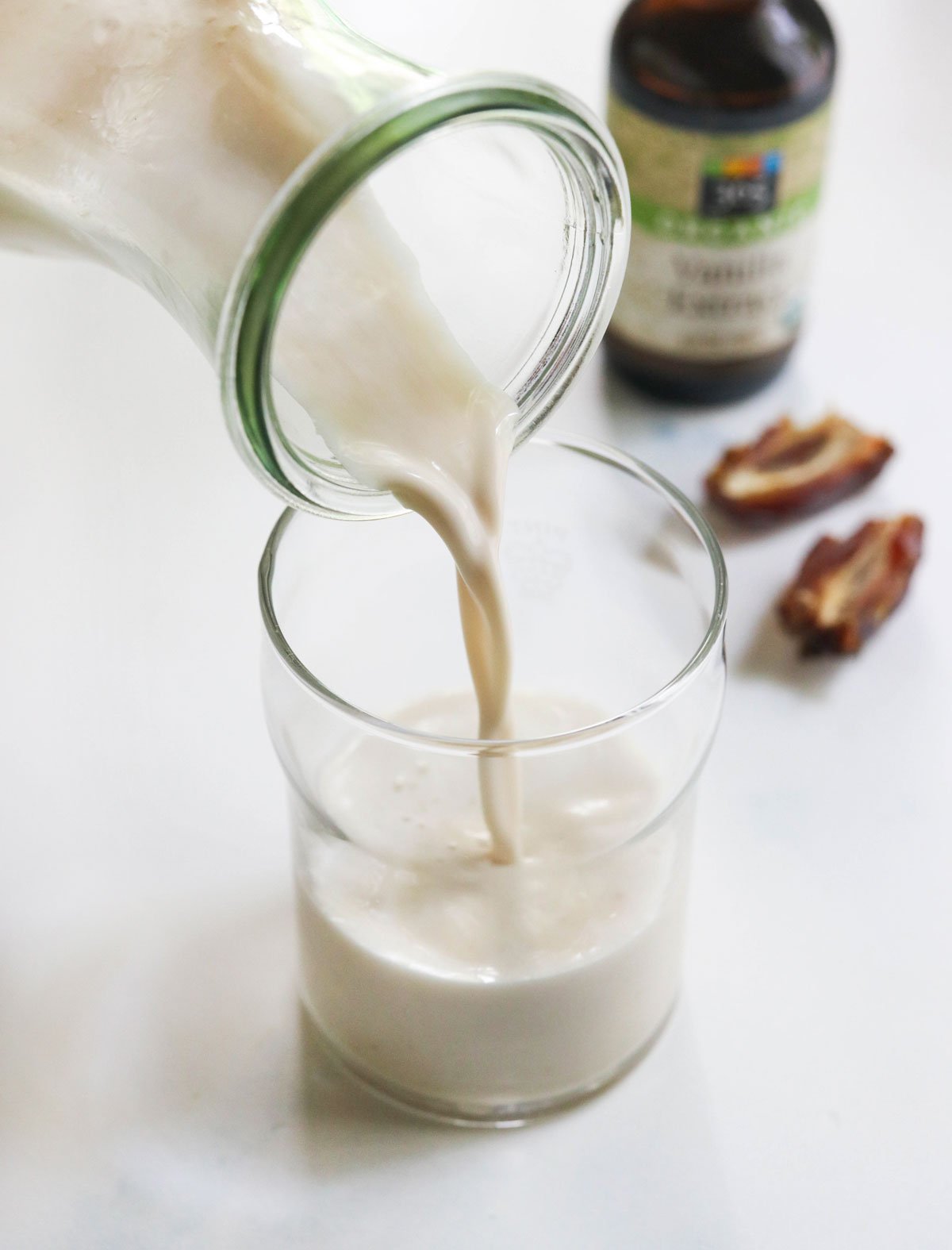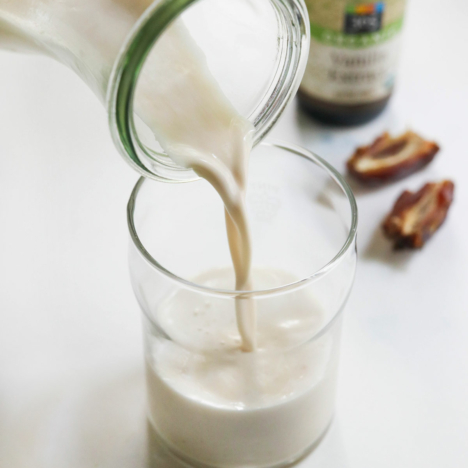What is Vanilla Almond Milk?
Similar to Chocolate Almond Milk, vanilla almond milk is lightly sweetened and flavored with vanilla. This flavor is commonly sold at grocery stores, but it’s super-easy to make at home, without any extra preservatives or thickeners. This recipe is based on my original almond milk recipe, but embellished with extra flavor!
How to Adjust the Flavor
When you make your own vanilla almond milk, you get to control the flavor. Free free to start with less dates if you don’t want a sweet milk. You can always add more, to your taste, if needed. If you don’t want a strong vanilla flavor, you can use less of that, too. I always like to taste as I go, to make sure it turns out perfectly every time.
Almonds Dates (or maple syrup) Vanilla extract
You’ll blend the almonds with water, then strain out the almond pulp, leaving behind a silky-smooth almond milk.
Straining out the almonds first keeps the almond pulp neutral in flavor, and easy to work with, so you can save it to make my favorite Almond Pulp Hummus as a healthy snack later.
Then you’ll just pour the strained almond milk back into the blender, add in the dates and vanilla, and blend again until smooth. You don’t have to strain the milk again if you have a blender that is powerful enough to break down the dates. I prefer not to strain it a second time, so that the milk retains the fiber from the dates, and helps thicken it slightly.
If you end up with a milk that tastes too sweet, you can always add more water to dilute it, or a pinch of salt to help balance the flavor.
Is Almond Milk Good for You?
Almond milk doesn’t have the same protein content as cow’s milk, but it’s a great dairy-free free alternative for adding to smoothie recipes and serving over cereal. Almonds are also loaded with nutrients! Benefits of Almonds:
Almonds are a good source of vitamin E, which has been linked to lowering the risk of heart disease. They are also high in magnesium, which may help to lower blood sugar levels and may improve insulin sensitivity. Getting plenty of magnesium may also help with lowering blood pressure. Eating almonds regularly may help to lower “bad” LDL cholesterol levels.
Considering that cow’s milk may increase the risk of certain cancers and may also increase the risk for hip fractures, almond milk seems like a pretty satisfying alternative to me. I hope you’ll enjoy it as much as my family does! If you try this recipe, please leave a comment below letting me know how you like it. If you make any modifications, I’d love to hear about those, too! We can all benefit from your experience. — Reader Feedback: What’s your favorite non-dairy milk? I have tutorials for making oat milk and hemp milk, too!
